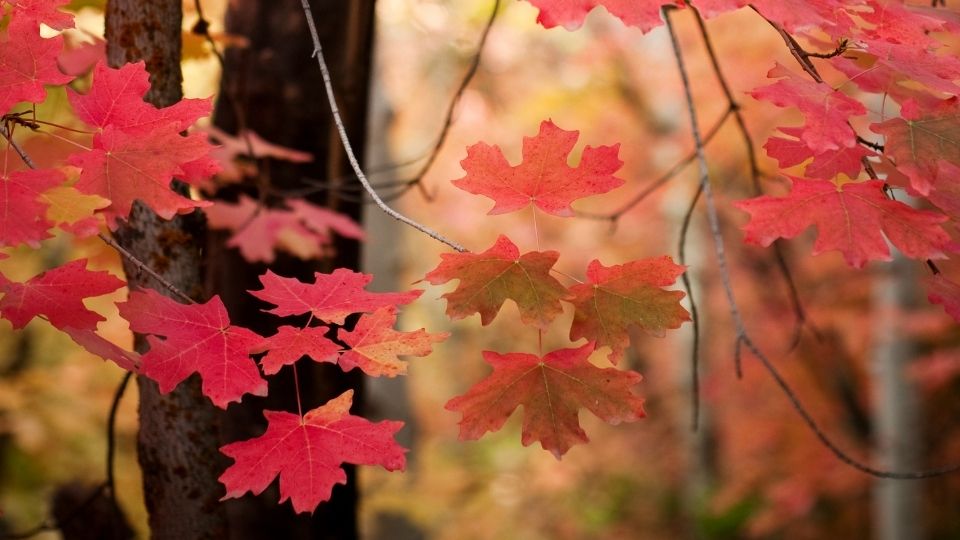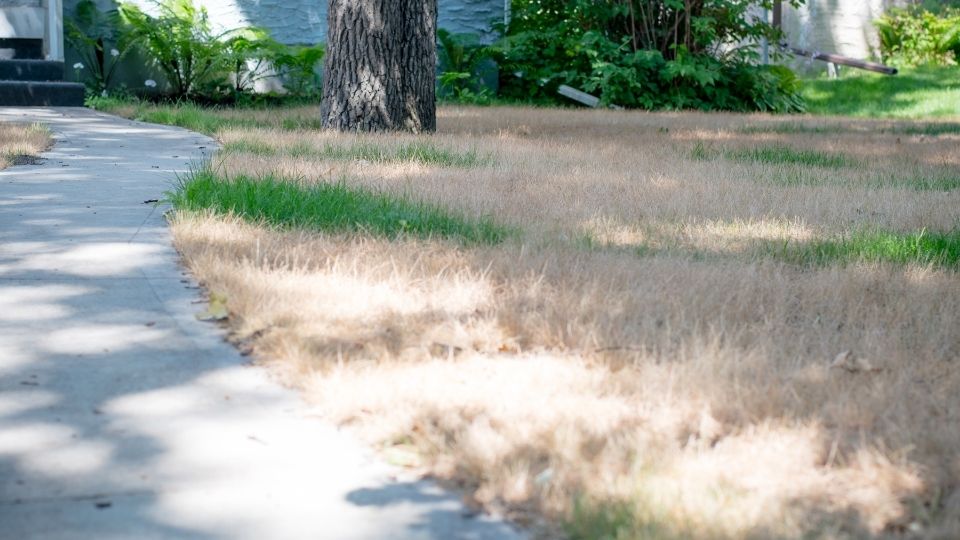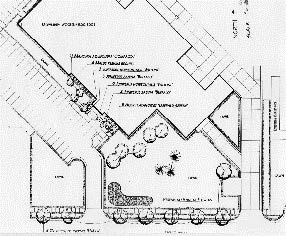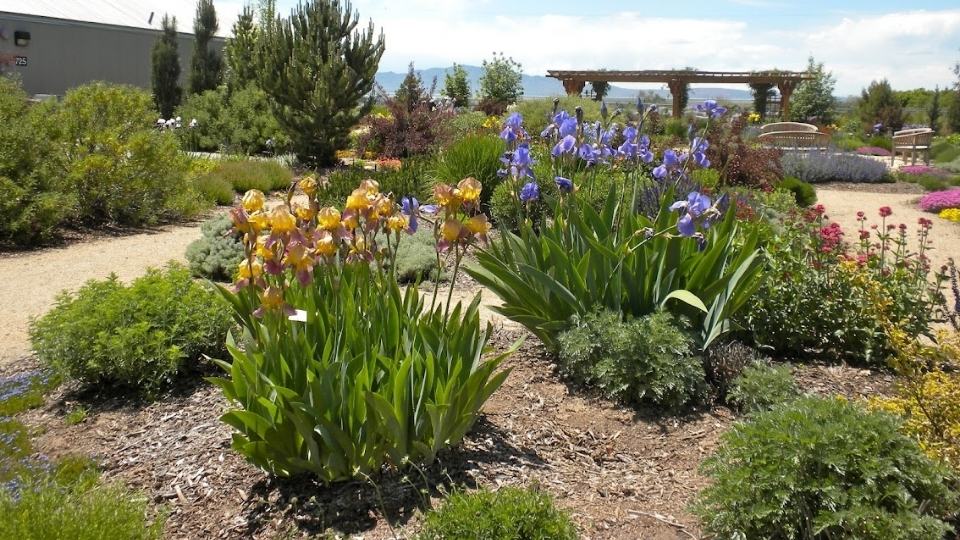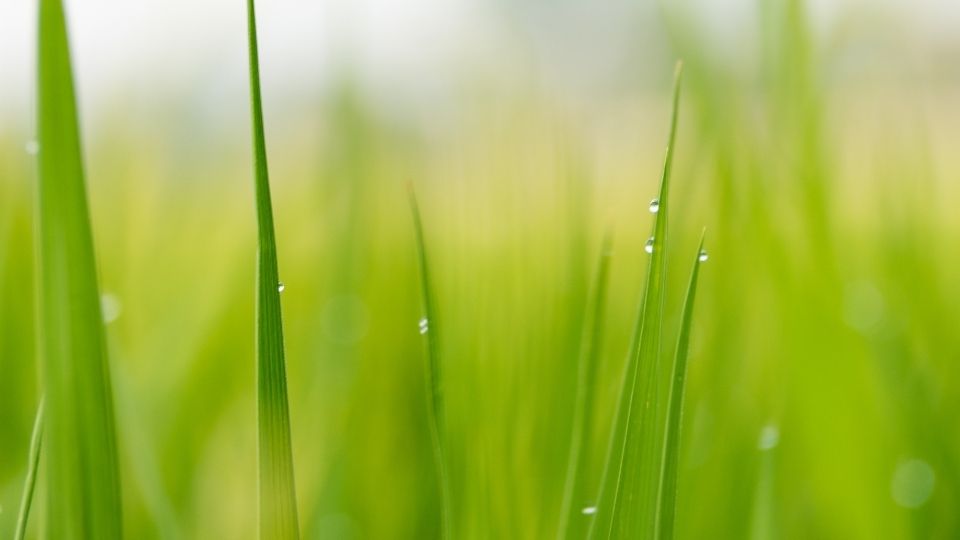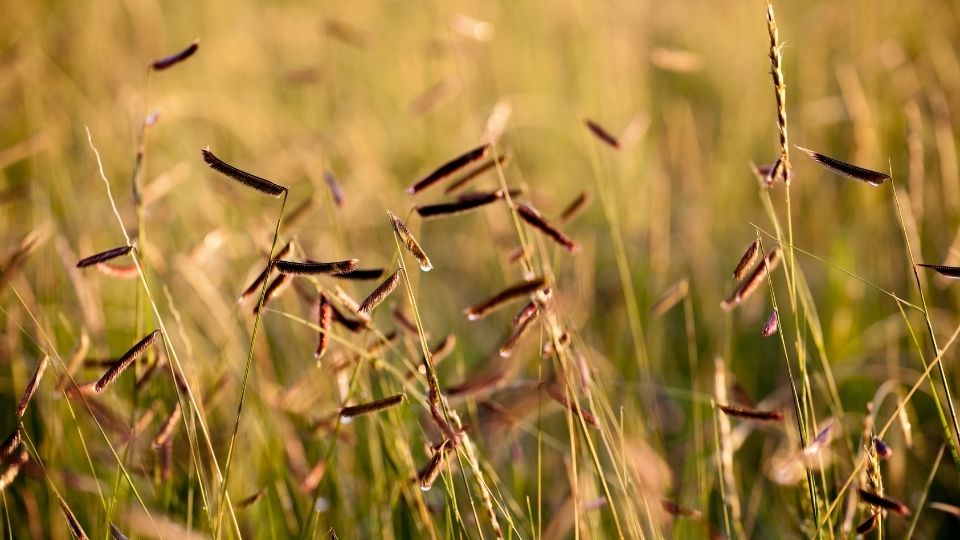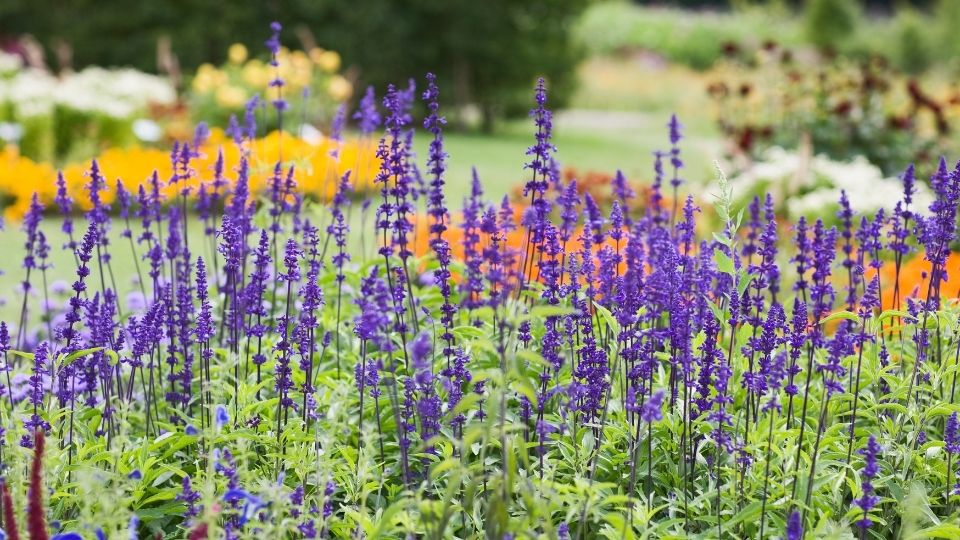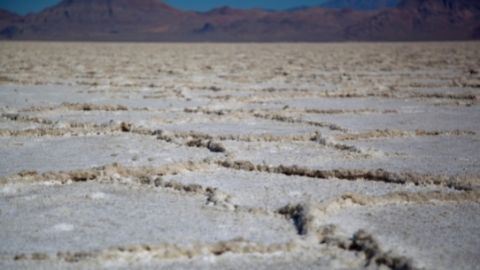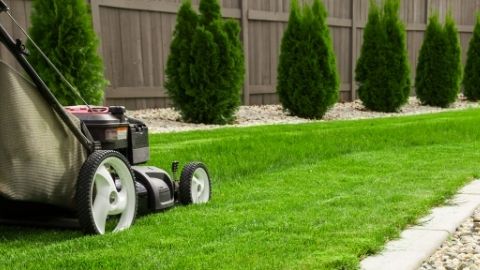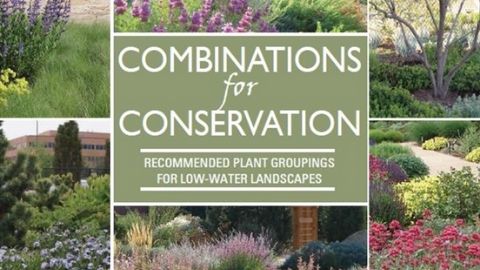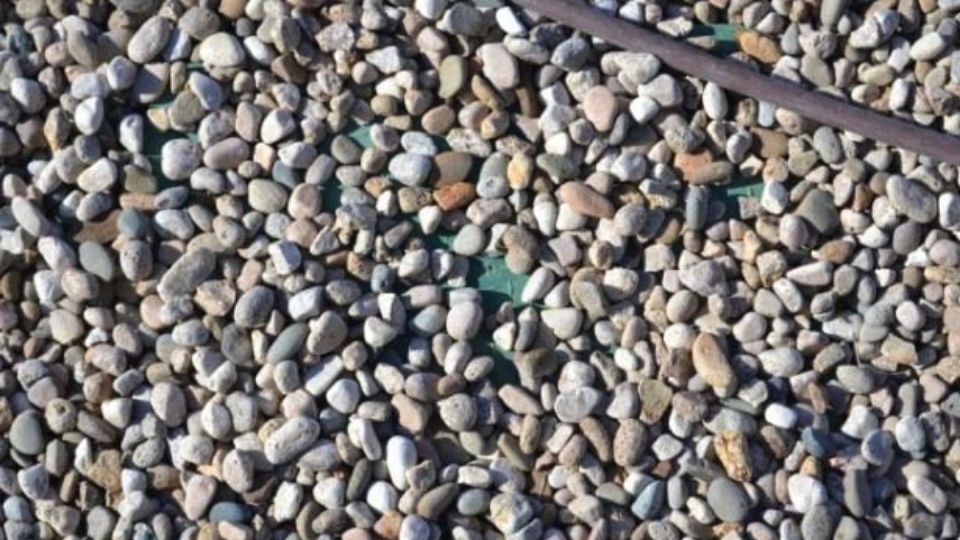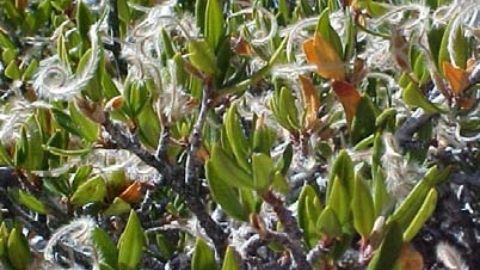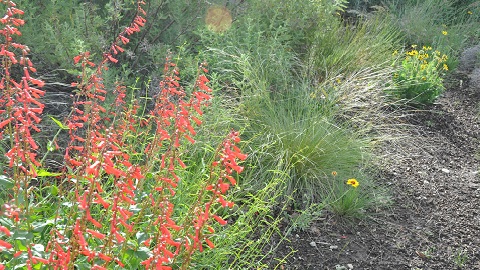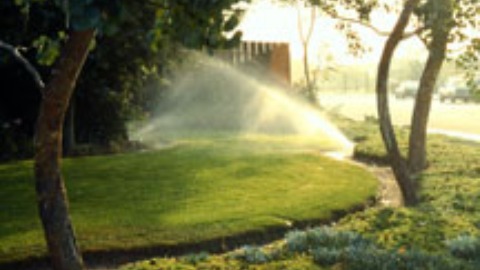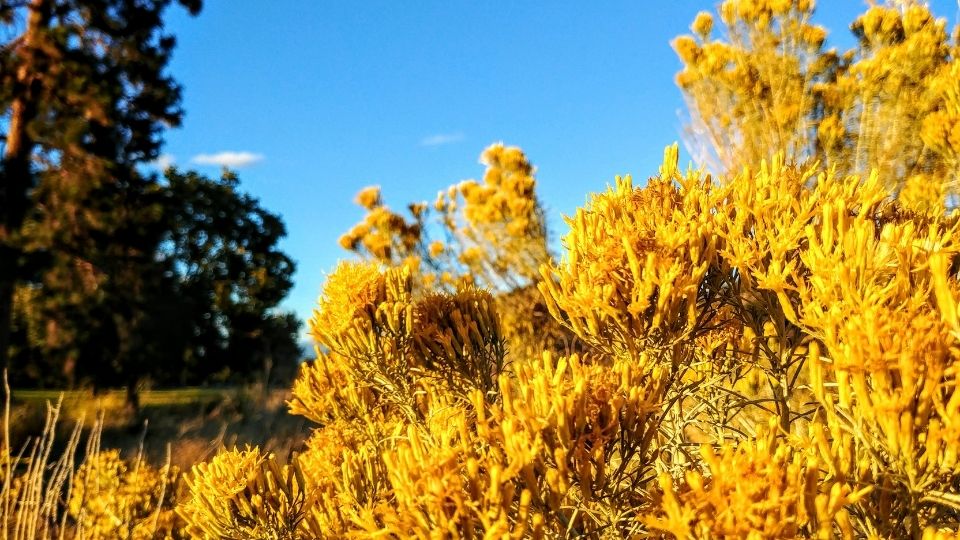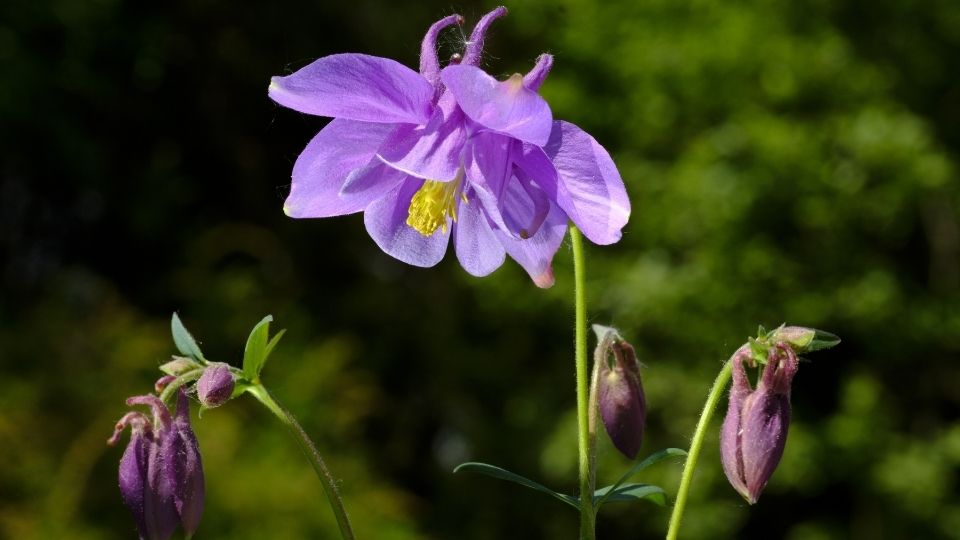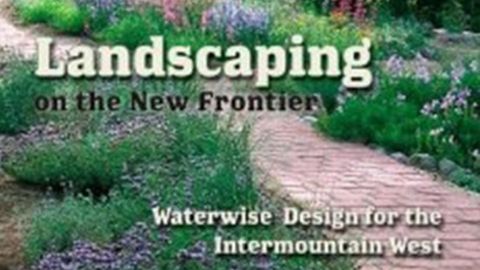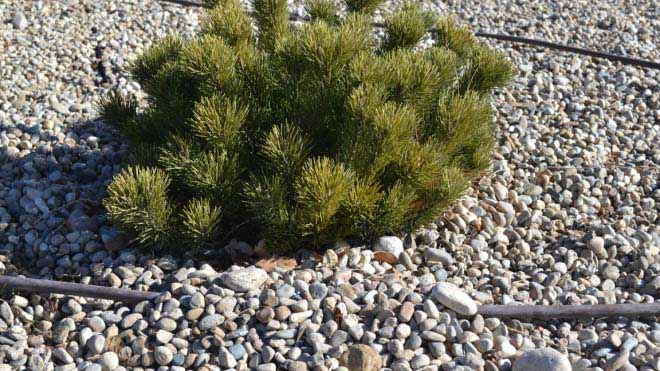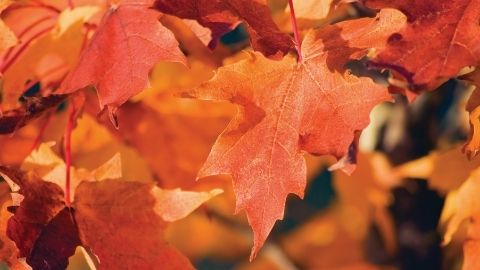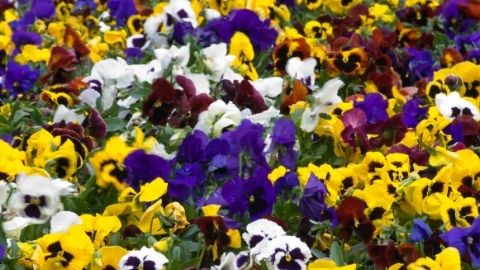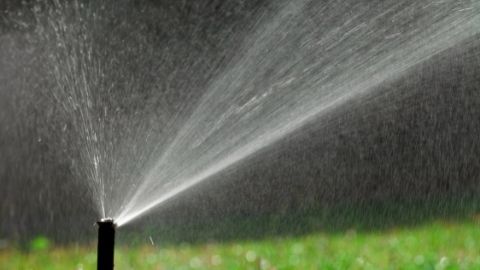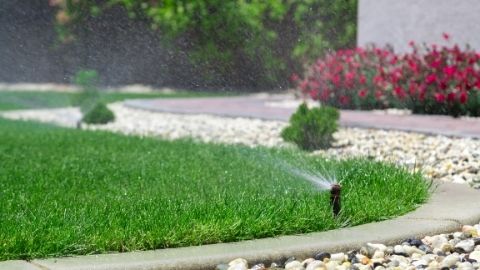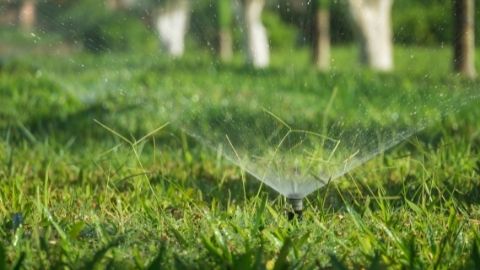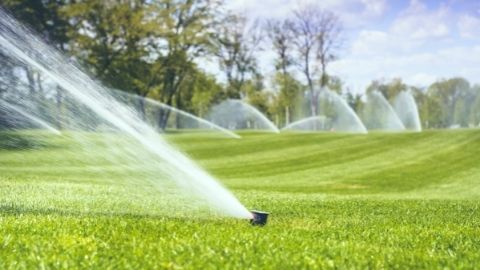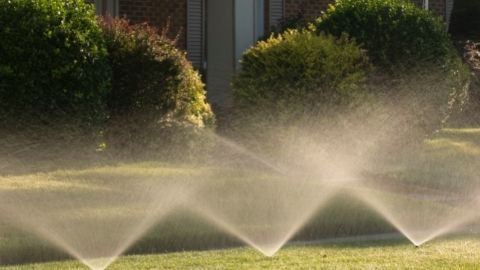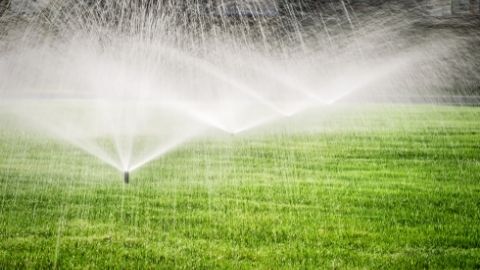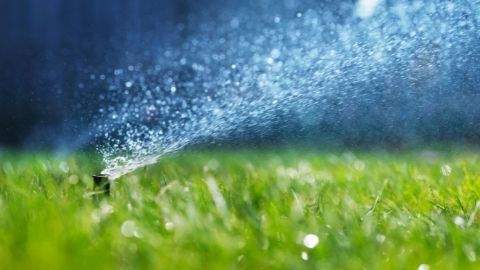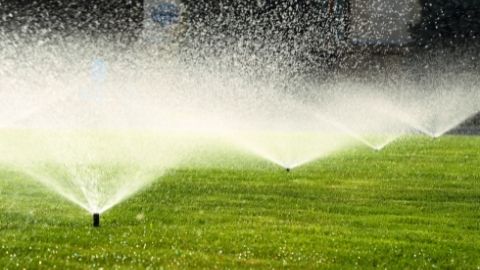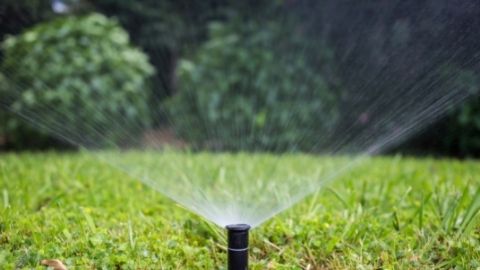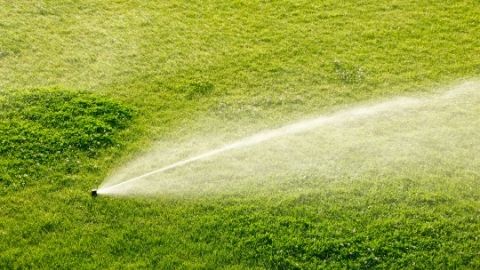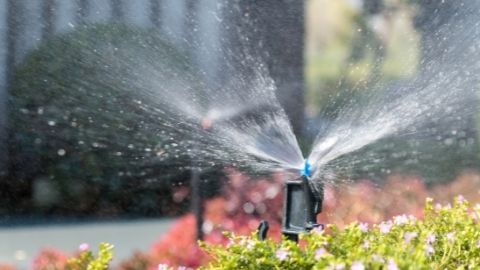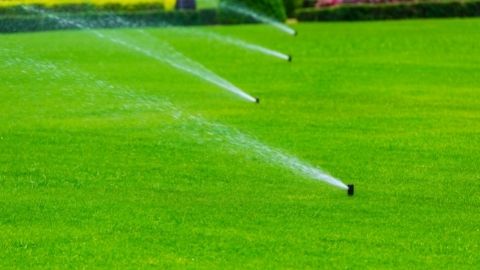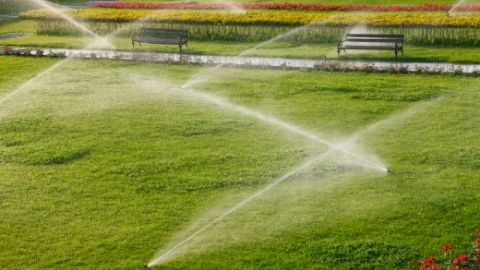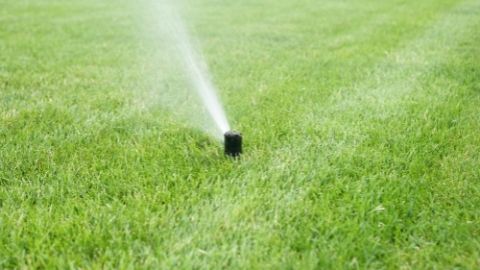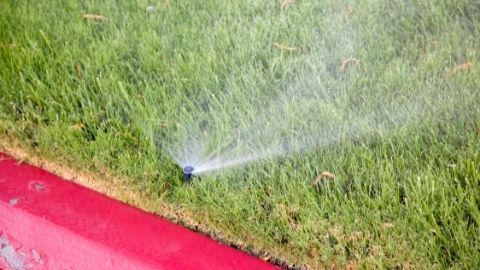16 Less Common Trees for Utah Landscapes: Diversifying Utah’s Community Forests
 Utah is a fairly harsh place to grow trees in town and city landscapes, leading people to think that only a few tough species can be grown here. It seems to be this attitude that leads to the over-planting of a fairly narrow palette of not very good quality trees – a handful of maples, too many cottonwoods and willows, Siberian elm, etc. Yet there are many tree species that have proven themselves in Utah’s urban environments, but that are little known. Often this is due to lack of commercial availability, lack of experts promoting them, or lack of existing examples for people to look at when they are considering a new tree.
Utah is a fairly harsh place to grow trees in town and city landscapes, leading people to think that only a few tough species can be grown here. It seems to be this attitude that leads to the over-planting of a fairly narrow palette of not very good quality trees – a handful of maples, too many cottonwoods and willows, Siberian elm, etc. Yet there are many tree species that have proven themselves in Utah’s urban environments, but that are little known. Often this is due to lack of commercial availability, lack of experts promoting them, or lack of existing examples for people to look at when they are considering a new tree.
The species included in this fact sheet are a handful (16) that the authors feel are rock-solid selections for much of urban and suburban Utah (from big cities to small towns) – selections that deserve to be planted much more than they are now. None are truly native to Utah, though one (Chitalpa) is a hybrid of a native and a non-native species. We hope in the future to have several good Utah-native tree species more readily available so we can add them to the list. Nevertheless, many Utah-native trees are adapted to cool, moist mountain conditions, while most of Utah’s people live in the hot dry valleys that really challenge these trees. Aspen is an example of a good native tree that does poorly in most non-mountain landscapes.
None of these 16 species are common in Utah. However, all of them are commercially available. Local nurseries may not necessarily have them in stock, but if you are interested in one of these species, or in any less common tree, don’t hesitate to ask your neighborhood nursery if they will order one in for you.
For information on these and other species, look at the book Trees of Utah and the Intermountain West by Michael Kuhns from Utah State University Press, available on-line or from most bookstores in Utah. A great book for real woody plant enthusiasts is Michael Dirr’s Manual of Woody Landscape Plants by Stipes Press (also available on-line and in some Utah bookstores). Finally, the Utah Tree Browser CD-ROM has a good computer program you can load onto your PC that allows you to select the tree you want based on its characteristics from a list of 229 Utah trees. Copies can be obtained from any county Extension offi ce, or by visiting extension. usu.edu/forestry. Finally, here’s a tip to use when looking on the internet for plant information: if you are really into plants and want to quickly access higher quality plant web sites aimed at more knowledgeable people, enter the plant’s Latin or scientifi c name in your search engine.
16 Common Tree Species
Conifers (evergreen or deciduous)
- Incense-cedar (Calocedrus decurrens; formerly Libocedrus decurrens)
- European Larch (Larix decidua)
- Lacebark Pine (Pinus bungeana)
- Giant Sequoia (Sequoiadendron giganteum)
- Baldcypress (Taxodium distichum)
Broadleaves (all are deciduous)
- Paperbark Maple (Acer griseum)
- Fringetree • White Fringetree (Chionanthus virginicus)
- Chitalpa (Chitalpa × tashkentensis)
- Yellowwood (Cladrastis kentuckea; formerly C. lutea)
- Corneliancherry Dogwood (Cornus mas)
- Turkish Filbert • Turkish Hazel (Corylus colurna)
- European Beech (Fagus sylvatica)
- Kentucky Coffeetree (Gymnocladus dioicus)
- Yellow-poplar • Tuliptree • Tulip-poplar (Liriodendron tulipifera)
- Bur Oak • Mossycup Oak (Quercus macrocarpa)
- Japanese Tree Lilac (Syringa reticulata)
Conifers (evergreen or deciduous)
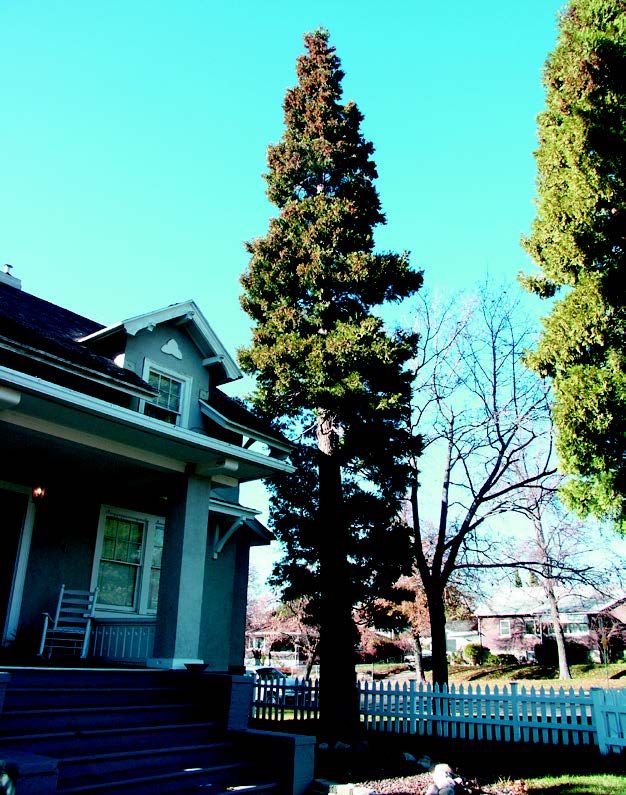
Incense-cedar
(Calocedrus decurrens; formerly Libocedrus decurrens)
Leaves: Small; scale-like; attached in whorls of four; fl attened along and clasping twig; 1/8” to 1/2” long; dark green; evergreen; persist 3 to 5 years; aromatic when crushed.
Twigs/Buds: Twigs slender; covered by foliage; often fl attened and arranged in vertical sprays. Buds very small; indistinct; not useful for identifi cation purposes.
Flowers/Fruit: Fruit a cone; 3/4” to 1-1/2” long; elongated; red-brown; hangs-down; 6 scales, though only fi ve are apparent, with 2 scales becoming very long at maturity, with the appearance of a duck’s bill as they open; matures by fall, but stays on tree through winter.
Bark: Scaly to fi brous; light brown to rusty-red; eventually becoming deeply furrowed; distinctive.
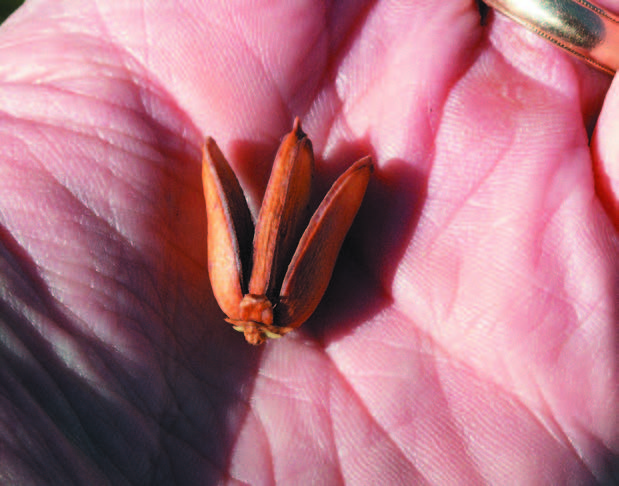 Wood: Important; sapwood nearly white and thin; heartwood reddish; light weight; soft; extensively used for pencils.
Wood: Important; sapwood nearly white and thin; heartwood reddish; light weight; soft; extensively used for pencils.
General: Native to mountainous areas in California, Oregon, and Washington. Not a true cedar. Medium to fairly large tree; medium to slow growth. Shade tolerant.
Landscape Use: A nice, large tree planted in Utah more in the past than presently. I have seen several in Salt Lake City growing in yards of 40 to 50 yearold houses and doing quite well. The bark is very attractive as it ages. The tree has an arborvitae-like look, but somehow different. Fairly heat tolerant and can stand a range of soil conditions. Zones 5- 8(9).
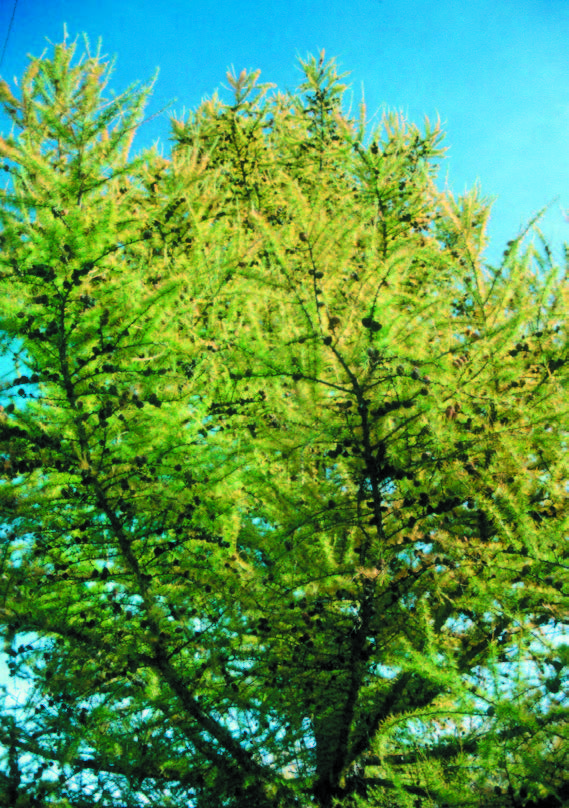
European Larch
(Larix decidua)
Leaves: Needles borne singly; 3/4” to 1-1/4” long; deciduous; bright green, turning yellow in fall; triangular or 4- sided in cross-section; soft; alternately arranged on new growth, on older growth occurring in dense clusters of 30 to 40 on spur shoots.
Twigs/Buds: Twigs slender; glabrous; orange-brown; obvious spur shoots on older growth. Buds round; dark redbrown.
Flowers/Fruit: Fruit a cone; 3/4” to 1-1/2” long; upright; 40 to 50 thin scales; green or purple turning brown at maturity.
Bark: Thin and smooth on young stems; gray-brown and scaly on older stems.
Wood: Not widely used; sapwood yellowish-white; heartwood yellowish-brown; strong; hard; durable; used for poles, railroad ties, lumber.
General: Native to the mountains of northern and central Europe. Does well in Utah with a moderate growth rate and is quite cold-tolerant; prefers moist soils. Shade intolerant.
Landscape Use: Beautiful tree with great, golden fall color. Deciduous character is interesting but not everyone likes its winter appearance. Trees I have seen are generally large with strongly pointed, coneshaped crowns. Zones 2-6. Japanese larch (Larix kaempferi) also is sometimes planted in Utah. This larch has more blue-green needles and the tips of the cone scales are curved back, giving the cone a rosette appearance. It has similar requirements to European larch. Zones 4-7.
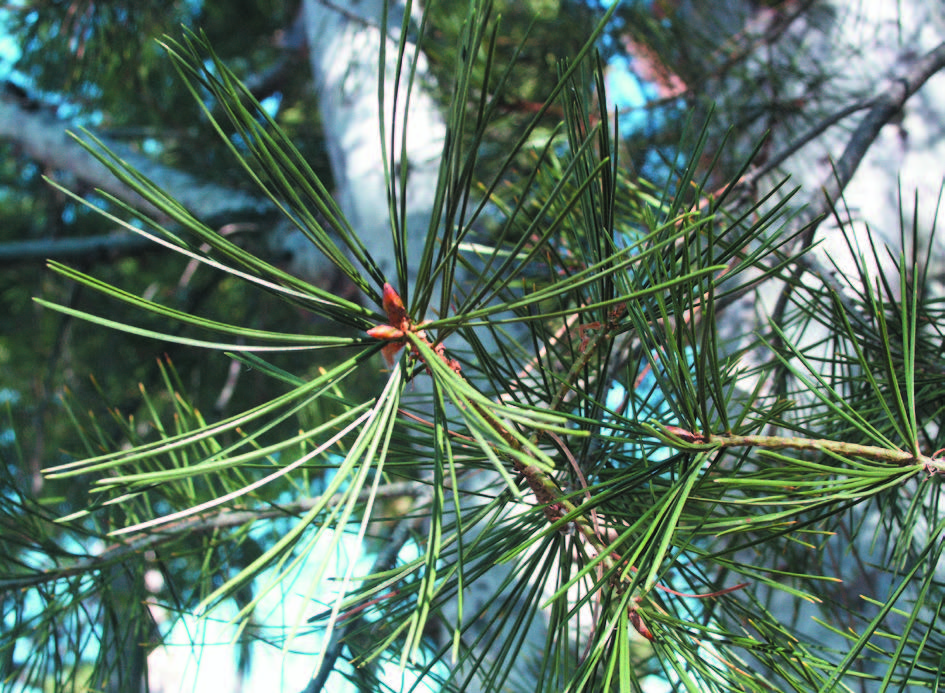
Lacebark Pine
(Pinus bungeana)
Leaves: Needles in bundles of 3; 2” to 4” long; stiff; dark green; evergreen, remain on tree 3 to 4 years.
Flowers/Fruit: Fruit a woody cone; 2” to 3” long; curved, triangular spine on the tips of the scales.
Bark: Scaly bark that comes off in patches like a London planetree; irregular patches of green, white, and brown; very distinctive.
General: Native to China. Tolerant of a variety of conditions, including pavement nearby. Fairly cold and alkaline-soil tolerant; shade intolerant.
Landscape Use: Very desirable tree. Use as a specimen tree where showy bark can be observed. Foliage and crown shape and size remind me of a Scotch pine. Should be planted more often. Zones 4-8.
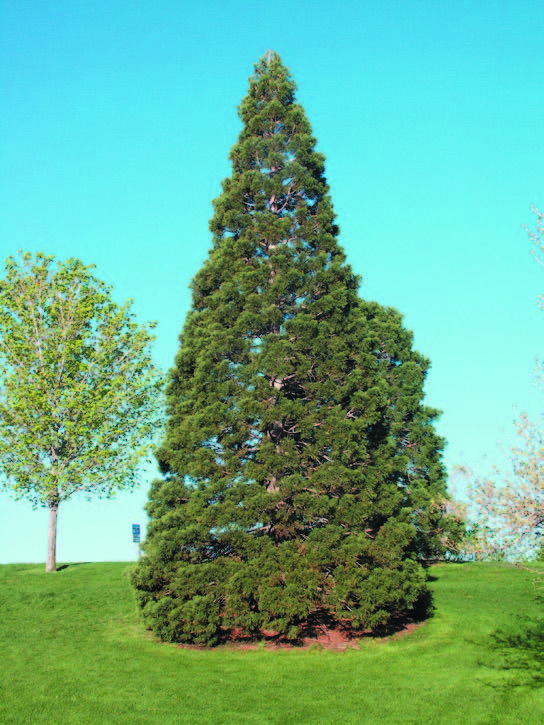
Giant Sequoia
(Sequoiadendron giganteum)
Leaves: Awl-shaped leaves, 1/8” to 1/2” long, sometimes look scale-like, alternately or spirally arranged along twig; evergreen; blue-green; somewhat similar to junipers.
Twigs/Buds: Twigs slender; covered by leaves. Buds small; naked (no scales).
Flowers/Fruit: Fruit a woody cone; oval; 1-3/4” to 3-1/2” long; red-brown; hangs down after fi rst year; 25 to 40 wrinkled scales with diamond shaped ends; mature in two years but cones may persist on tree with live seed for up to 20 years.
General: Native to a few groves in the western slopes of the Sierra Nevada in California; not native to Utah.
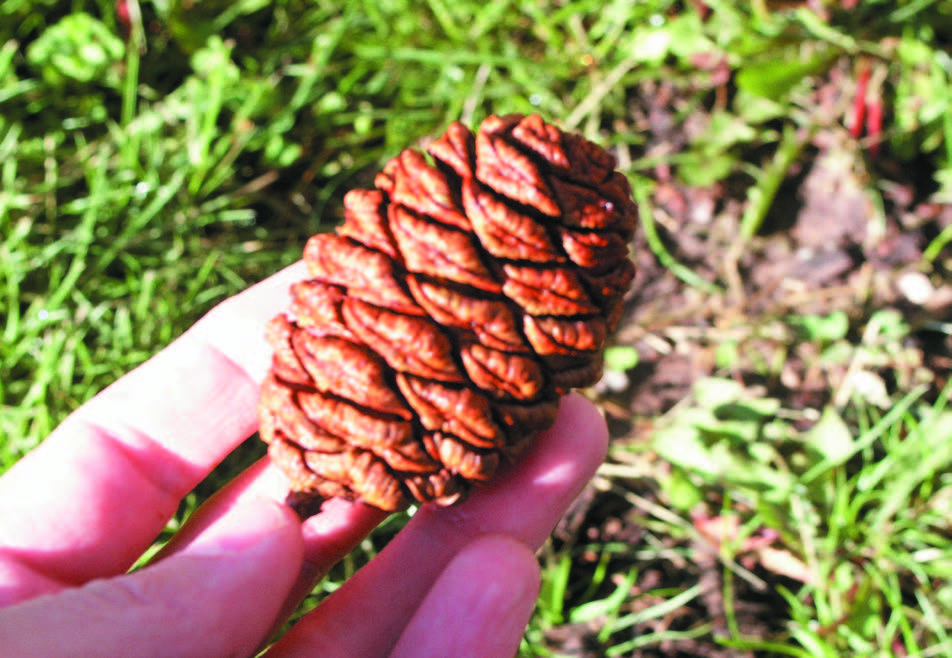
Native trees grow rapidly, get very large (nearly 300’ tall), and can be 4,000 to 5,000 years old. Extremely resistant to insects, diseases, and fi re. Intermediate shade tolerance.
Landscape Use: This tree does surprisingly well in Utah where temperatures don’t get too cold, but avoid very hot locations. Several good examples can be found in the Salt Lake area. It has a nice, dense, upright, conical crown. Likes a fair amount of moisture, but tolerates some drying. Zones 6-8.
 Baldcypress
Baldcypress
(Taxodium distichum)
Leaves: Linear or needle-like; 1/2” to 3/4” long; spirally or alternately arranged; deciduous; smallest twigs fall off in autumn with needles attached; small twigs and attached needles appear tworanked and feather-like; yellow-green in summer turning rust colored in fall.
Twigs/Buds: Branch-end or terminal twigs have buds and are not deciduous; lateral or side twigs deciduous with needles still attached. Buds small; round; several overlapping scales.
Flowers/Fruit: Fruit a woody cone; round; 3/4” to 1-1/3” diameter; brown; 9 to 15 wrinkled, 4-sided, woody scales that break away when mature; mature in one year; seeds small, 3-winged.
Bark: Thin and scaly to fi brous; peels in thin, vertical strips; red-brown to gray.
Wood: Important; light to dark brown; very durable and rot resistant; used for construction, siding, shingles, etc.
General: Native throughout the southeast U.S. and as far north as southeast Missouri and southern Illinois; not native to Utah. Typically grows in swamps in the South, where its roots form pneumatophores (knees) as an adaptation to fl ooding. Can get 1,000 to 2,000 years old in native areas. Shade intolerant.
Landscape Use: This is a very interesting, large, deciduous conifer that has attractive, feathery foliage in summer, nice fall color, and an interesting shape and texture year-round. The fruit also is interesting. Not common in Utah, but will do well in a wide variety of soil conditions. Specimens are doing well on the BYU campus, in Salt Lake City, and on the USU campus in Logan. Zones 4-9.
Broadleaves (all are deciduous)
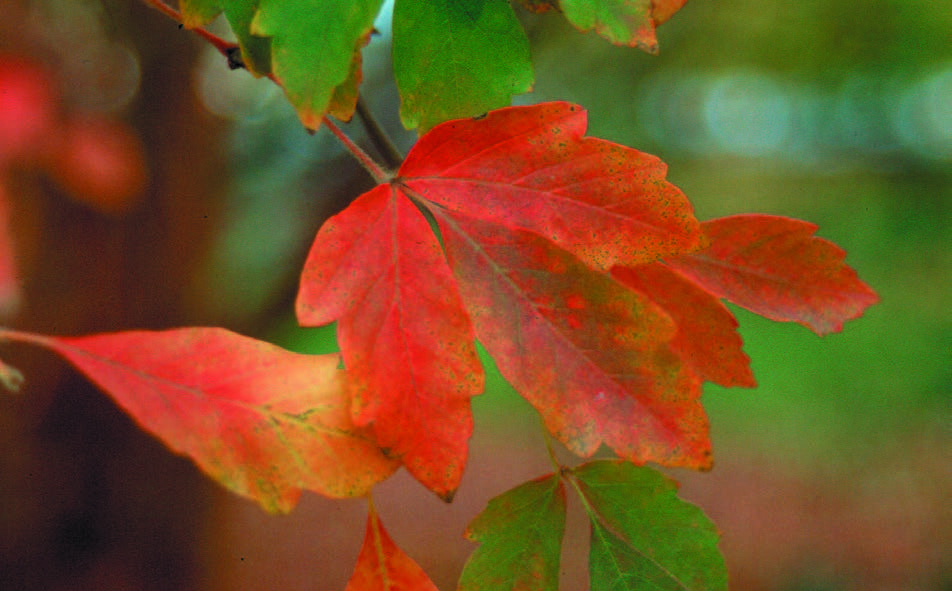 Paperbark Maple
Paperbark Maple
(Acer griseum)
Leaves: Opposite; compound; trifoliolate (3 leafl ets); 3” to 6” long; few coarse teeth; leafl ets short-stalked or with no stalk; blue-green and glabrous above, pubescent on veins beneath; petiole 2” to 3” long and pubescent; red fall color.
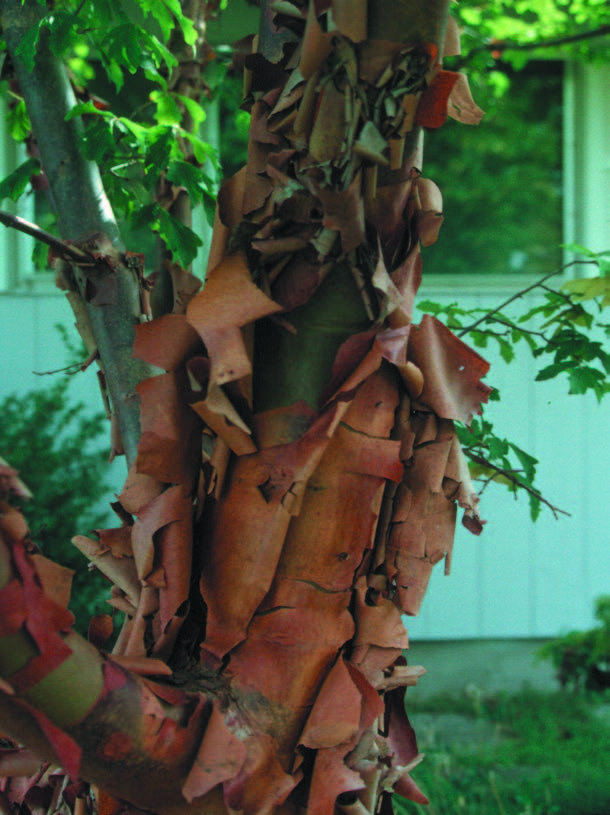 Twigs/buds: Twigs pubescent when young; buds are imbricate, almost black, pointed, pubescent at the base with a collar of hairs.
Twigs/buds: Twigs pubescent when young; buds are imbricate, almost black, pointed, pubescent at the base with a collar of hairs.
Flowers/Fruit: Fruit a samara; 1” to 1-1/2” long; pubescent; wings at 60 to 90 degree angle; fall maturing.
Bark: Older twigs and trunk with beautiful peeling red-brown bark.
General: Native to China. Fairly drought resistant and tolerates a variety of soil conditions including moderately high pH. Shade intolerant.
Landscape Use: This beautiful small to mediumsized tree is uncommon in Utah and defi nitely should be planted more often. Its bark is outstanding and fall color can be good. Zones 4-8.
Fringetree • White Fringetree
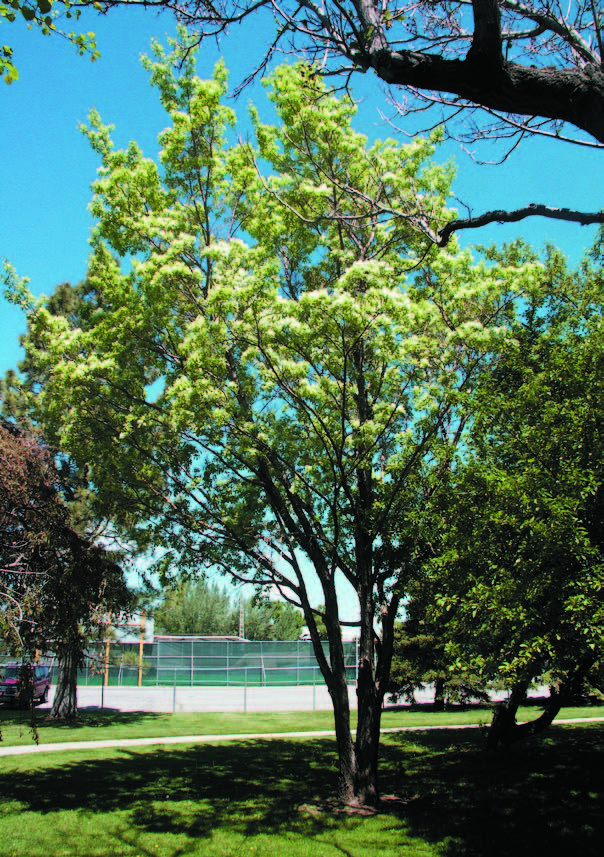
(Chionanthus virginicus)
Leaves: Opposite; simple; oval to ovate; 4” to 8” long, 1/2 as wide; deciduous; entire margin; dark green and shiny above; paler beneath with at least some pubescence; petiole 1/2” to 1” long and hairy; fall color yellow to yellowbrown.
Twigs/Buds: Twigs stout; more or less hairy; green-brown; somewhat 4-angled. Terminal bud present; ovoid, with 3 sets of ridged scales, green to brown.
Flowers/Fruit: Flowers polygamo-dioecious; showy; white; with 3/4” to 1-1/4” long petals on male and female flowers that give a soft, fleecy effect; held in 4” to 8” long groups that bloom in late may to early June. Fruit a blue-black, ovoid drupe; 1/2” to 3/4” long; covered with a whitish waxy coating; ripens late summer.
Bark: Thin and smooth on young branches; gray to red-brown; becoming scaly and ridged.
Wood: Unimportant; dense; hard.
General: Native to the southeastern U.S. Adaptable to a wide range of sites. Naturally grows in wet areas and is shade tolerant.
Landscape Use: A large shrub to medium-sized tree with beautiful flowers and good form. This tree is doing well in Salt Lake City, particularly at Red Butte Gardens and Arboretum. Very popular in Europe. Should tolerate high pH soils and heat, but also is cold hardy. Should be planted more often in Utah. Zones 3-9.
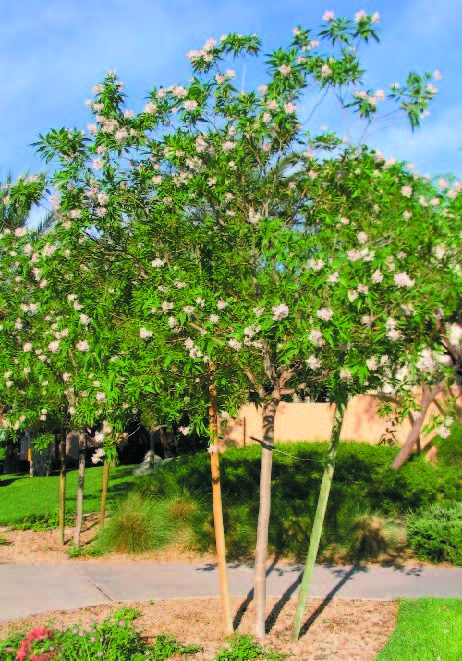 Chitalpa
Chitalpa
(Chitalpa × tashkentensis)
Leaves: Leaves alternate, occasionally opposite; 4” to 5” long, 1” wide, entire, narrow-elliptic to lanceolate, dull green, glabrous above and slightly pubescent beneath; deciduous.
Flowers/Fruit: Flowers in late spring, terminal erect clusters (racemes), 1” long , trumpet-shaped, pink, white, or lavender, yellowish center with purple veins in the throat; showy. Does not generally produce fruit.
Bark: Smooth, light gray, becoming darkened and thickened with age.
General: Hybrid between Catalpa bignonioides (Southern catalpa) and the Utah native, Chilopsis linearis (desertwillow); full sun to part shade; longblooming flowers provide nectar for hummingbirds.
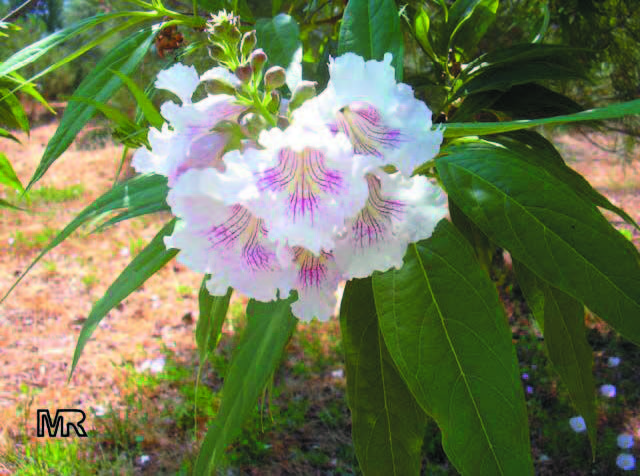
Cultivated varieties include ‘Pink Dawn’, a smaller, spreading tree with pink flowers and ‘Morning Cloud’, a more upright tree with white flowers.
Landscape Use: Fairly drought-tolerant small multi-trunked shade tree that can be trained to a single leader if desired. Fast-growing, yet handles strong winds without breaking. Deep root system prevents damage to patio or walks. Tolerates high pH soils, heat, and drought and is ideal for low-water landscapes. Zones 6-9.
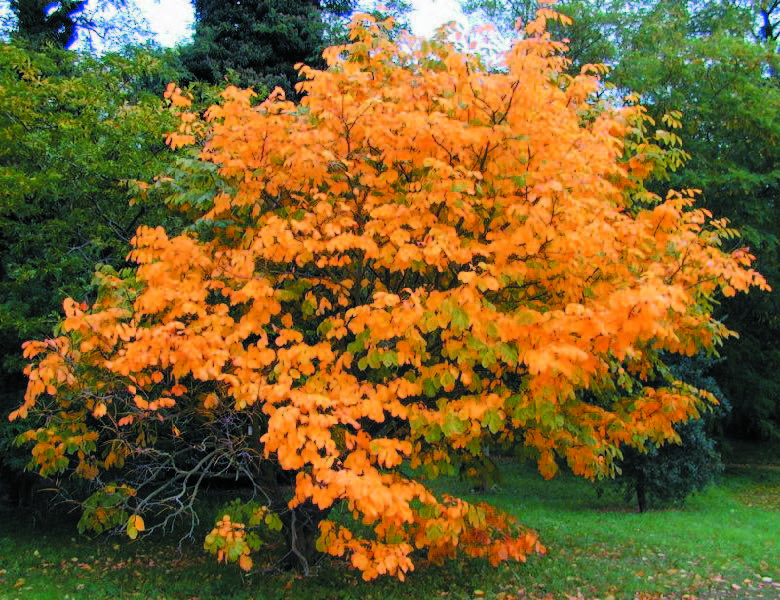 Yellowwood
Yellowwood
(Cladrastis kentuckea; formerly C. lutea)
Leaves: Alternate; once pinnately compound; 8” to 12” long; deciduous; 5 to 11 elliptic leafl ets, 2” to 4” long (terminal leafl et the largest), pointed apex, entire margins, glabrous; bright green; yellow fall color; petiole base swollen, covering bud.
Twigs/Buds: Twigs slender; zig-zag; red-brown; glabrous. No terminal bud; several lateral buds at each leaf scar packed into a brown, hairy cone, covered by the leaf base and nearly surrounded by the leaf scar.
Flowers/Fruit: Flowers perfect, white, 1” to 1- 1/4” long, pea-like, attractive, fragrant; borne in large, drooping groups in May to early June; very attractive. Fruit a 2” to 4” long, 1/2” wide legume; brown; maturing in October; contains 4 to 6 brown, flat, very hard seeds.
Bark: Very smooth and gray on young and old branches.
Wood: Unimportant; named for yellow heartwood; growth rings conspicuous; ring-porous.
General: Native to the southeastern U.S. and parts of the Midwest. Not common even where native. Likes well-drained, rich soil. Shade intolerant.
Landscape Use: This is a good, medium-sized landscape tree that is seldom planted, but should be more often because of its nice fl owers and foliage. Weak branch attachments due to included bark can be a problem. Zones 4-8.
 Corneliancherry Dogwood
Corneliancherry Dogwood
(Cornus mas)
Leaves: Similar to fl owering dogwood, but pubescent on both sides and somewhat smaller.
Twigs/buds: Twigs often with red top, green bottom, small hairs; floral buds broad, flat; vegetative buds valvate.
Flowers/Fruit: Flowers perfect; yellow; small, but in 3/4” bunches; appear very early, before leaves. Fruit a cherry-red, oblong drupe; 1/2” in diameter; matures in July; edible and used for jams and jellies.
Bark: Grayish brown, exfoliates in fl akes.
General: Native to the western Asia and central and southern Europe. Better adapted to high soil pH and poor conditions than most other non-shrub dogwoods. Intermediate shade tolerance.
Landscape Use: A small to medium sized tree rarely planted in Utah. I saw a planting of these growing at an NRCS Plant Materials Center near Manhattan, Kansas. They looked good, were growing well, and had attractive, edible fruit. Zones 4-8.
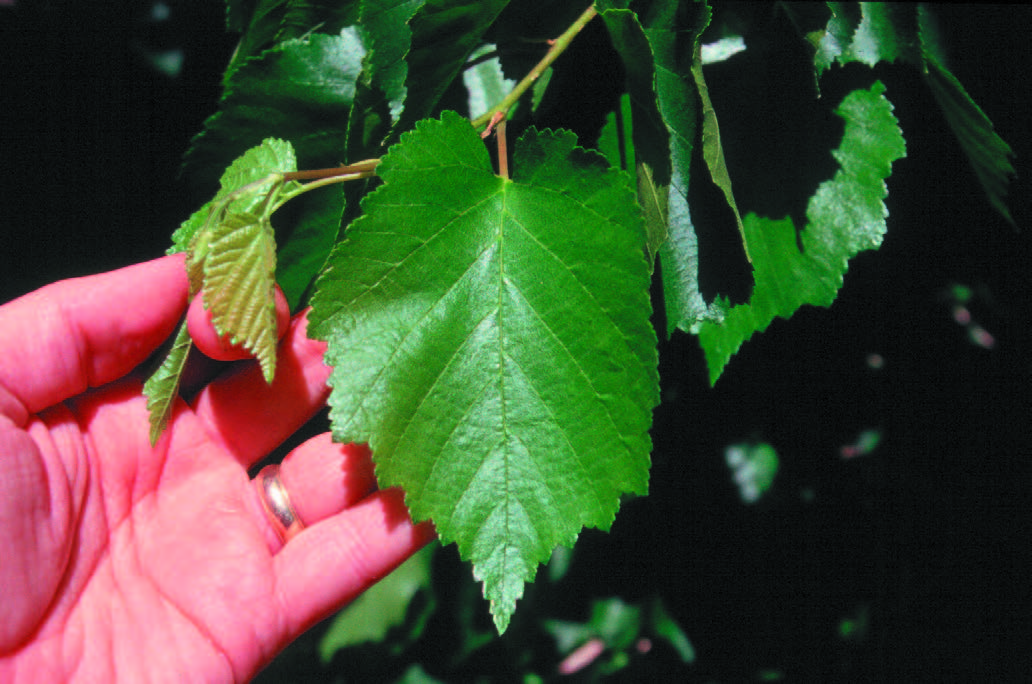 Turkish Filbert • Turkish Hazel
Turkish Filbert • Turkish Hazel
(Corylus colurna)
Leaves: Alternate; simple; wide and ovate to obovate; 2-1/2” to 6” long; deciduous; sharply, doubly serrate margin; rounded to heart-shaped base; acuminate apex; dark green and glabrous above; hairy on veins beneath; yellow to purple in fall but not effective; petiole 1/2” to 1” long.
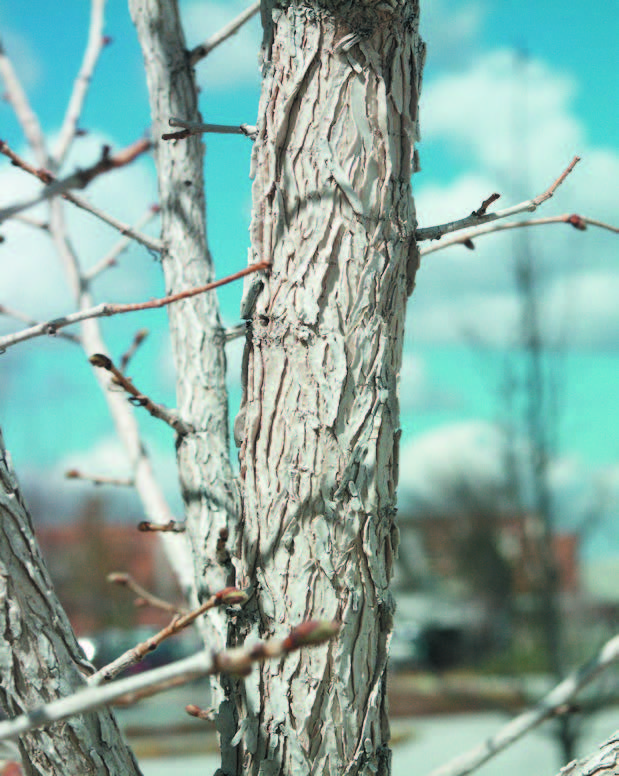 Twigs/Buds: Twigs pubescent and bumpy; grayishbrown; with small cracks developing with age down the length of the stem. No terminal bud; lateral buds 1/3” long, rounded, downy scales, green-brown.
Twigs/Buds: Twigs pubescent and bumpy; grayishbrown; with small cracks developing with age down the length of the stem. No terminal bud; lateral buds 1/3” long, rounded, downy scales, green-brown.
Flowers/Fruit: Fruit an edible nut with a bristly involucre, 1/2” to 5/8” diameter, attached to a large,
leafy bract.
Bark: Light brown; flaky; orangebrown inner bark exposed as scales fall off.
Wood: Unimportant; little used. Diffuseporous.
General: Native to southeast Europe and western Asia. Medium growth rate, medium-sized tree. Tolerates a wide variety of conditions including high soil pH, moderate compaction, moderate drought, and fairly cold temperatures, but not salt. Shade intolerant.
Landscape Use: Another very good tree that is not planted enough and will be diffi cult to fi nd. (Tip:
Look for the nurseries in your area that specialize in rare and underused trees.) Zones 4-8. Other, shrubby hazels with edible nuts worth trying in Utah are American hazelnut (Corylus americana) and beaked hazelnut (Corylus cornuta and C. cornuta var. californica).
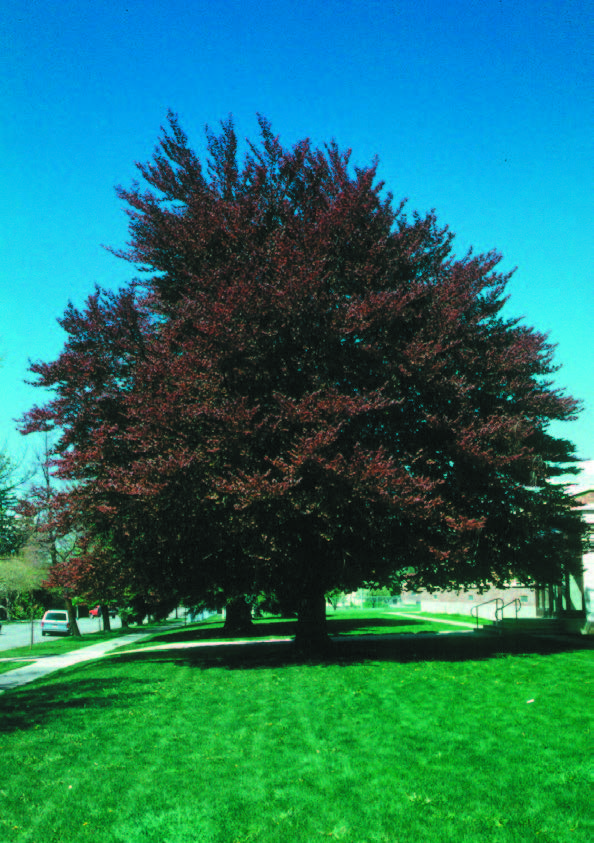 European Beech
European Beech
(Fagus sylvatica)
Leaves: Alternate; simple; ovate; 2” to 4” long, 1-1/2” to 2-1/2” wide; deciduous; entire or with few, small teeth; acuminate apex; shiny dark-green above, lighter green beneath; 5 to 9 pairs of veins; glabrous when mature; petiole 1/4” to 1/2” long; fall color very attractive golden-yellow to reddish-orange.
Twigs/Buds: Twigs thin; zig-zag from bud to bud; glabrous; light gray and somewhat shiny when mature. Terminal and lateral buds 3/4” to 1” long; brown; sharply pointed; with many overlapping scales.
Flowers/Fruit: Flowers inconspicuous, in small groups appearing as leaves open. Fruit a triangular, 5/8” long, edible nut, 2 to 3 enclosed in a woody, 4-part bur; matures in one year. Bark: Thin; smooth; beautiful dark gray color; roughens some with old age.
Wood: Very important timber tree in Europe; light colored; growth rings distinct; wider rays easily
visible; diffuse-porous; strong; heavy; used for flooring, tool handles, furniture.
General: Native to Europe, but widely planted in cooler climates around the world. Likes cool, moist, but not wet sites. Prefers acid soils but tolerates moderately high soil pH. Very shade tolerant.
Landscape Use: Beeches are beautiful large trees that should be planted more often. They stand shady spots or full sun equally well, as long as they get enough water. Many cultivars are available that vary greatly in crown form, leaf color and shape, and branch character. Cultivars with purple and
variegated leaves suffer severe leaf scorch in hot locations with full sun. Zones 4-7. American beech (Fagus grandifolia) is a similar species native to the eastern U.S. that could be planted in Utah, but it is not readily available from nurseries. It has bigger leaves than European beech (11 to 15 pairs of veins) and lighter colored bark. Zones 3-9.
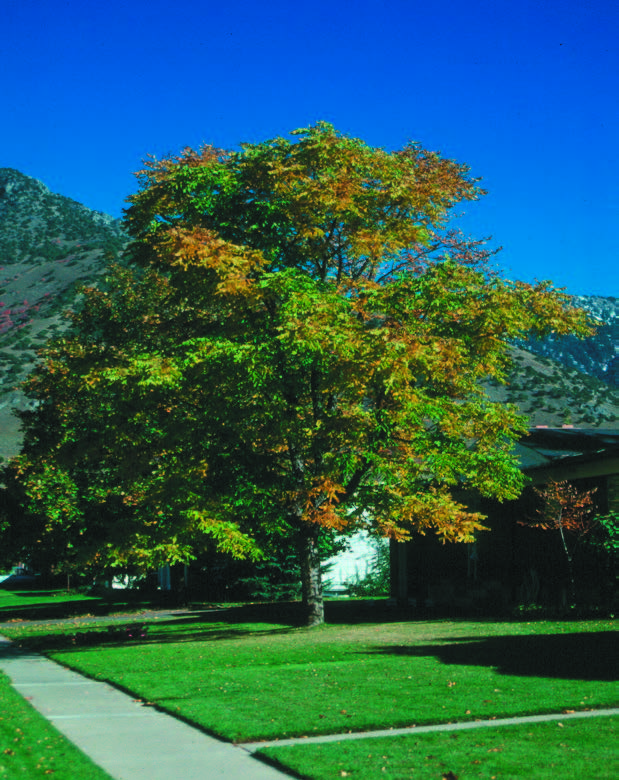 Kentucky Coffeetree
Kentucky Coffeetree
(Gymnocladus dioicus)
Leaves: Alternate; twice pinnately compound; very large, can be 2’ to 3’ long; deciduous; 20 to 40 ovate leafl ets, 1-1/2” long, pointed at tip, entire margins, glabrous; dark blue-green; yellow fall color.
Twigs/Buds: Twigs very stout; brown; glabrous or velvety; pith is wide and salmon-pink. No terminal bud; lateral buds deeply sunken in the bark; brown; hairy; 2 at each leaf scar.
Flowers/Fruit: Flowers dioecious (some are perfect), greenish-white, attractive; borne in large groups but not very conspicuous. Fruit a fl at legume; red-brown; leathery; pointed; 4” to 6” long by 1-3/4” wide; remaining closed until or through winter; contains 4 to 8 olive-brown, 1/2” diameter, flat, veryhard seeds imbedded in a sweet pulp.
Bark: Smooth and brown to gray on younger branches; on older stems turning gray, furrowed, with curved scales.
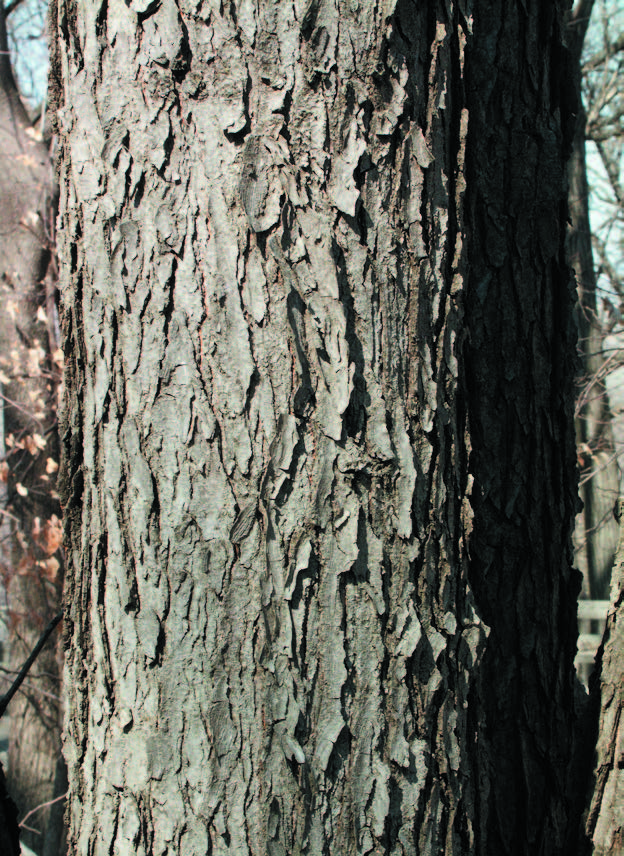 Wood: Unimportant; sapwood yellow; heartwood red; growth rings conspicuous; ring-porous; rays not conspicuous to naked eye.
Wood: Unimportant; sapwood yellow; heartwood red; growth rings conspicuous; ring-porous; rays not conspicuous to naked eye.
General: A fairly large tree native to most of the central-eastern U.S. Never very common naturally. Seeds ground and used as a coffee substitute by early settlers where native. Well-adapted to a variety of climates and soils. Shade intolerant.
Landscape Use: An excellent landscape tree that is seldom planted, but should be more often. Its stout twigs give it an interesting coarse texture in winter, and the dark blue-green foliage is very nice. The bark also is very attractive. The pods on female trees make it somewhat messy, but usually are not abundant. Even male trees can have a few pods if the tree has some perfect fl owers. Zones 3-8.
Yellow-poplar • Tuliptree • Tulip-poplar

(Liriodendron tulipifera)
Leaves: Alternate; simple; 4” to 6” across; deciduous; usually 4-lobed; leaf base and tip flat, leaf shape very distinctive; entire margin; glabrous; bright green with nice yellow fall color; petiole 2” to 4” long.
Twigs/Buds: Twigs fairly stout; red-brown; pith divided into chambers. Terminal buds about 1/2” long, covered with 2 duck-bill like scales; lateral buds much smaller.
Flowers/Fruit: Has large, green-yellow fl owers that are orange inside and appear in May or June after the leaves are open. Fruit an aggregate of deciduous samaras that persist on trees in the winter; 2-1/2” to 3” long; held upright.
Bark: Dark green and smooth on young stems; becoming thick, ash-gray, furrowed, with rough
ridges.
Wood: Very important; light yellow sapwood; light yellow to dark brown heartwood; even-textured; diffuse-porous; used for furniture, interior finish, boxes, pallets, crates, plywood, etc.; commonly available in lumber yards where it is usually called poplar.
General: Native to the southeastern U.S. as far north as southeast Missouri, and as far northeast as Vermont. Not a true poplar. Shade intolerant.
Landscape Use: Large tree that is not common in Utah but has been planted enough to have proven itself. Has a good, strong, pyramidal habit and bright green, unusually shaped leaves, and nice fall color that make the tree very attractive. The flowers and fruit are interesting but the seeds can be messy. Zones 4-9.
 Bur Oak • Mossycup Oak
Bur Oak • Mossycup Oak
(Quercus macrocarpa)
Leaves: Alternate; simple; oblong to obovate; 6” to 10” long, 3” to 5” wide; deciduous; margin with 5 to 9 rounded lobes; variable shape; dark green and glabrous above; pale and hairy beneath; yellow to brown fall color; petiole 1” long, hairy.
Twigs/Buds: Twigs stout; yellow-brown; becoming ashen or brown; hairy; often with corky ridges.
Terminal buds clustered at end of twig, blunt; lateral buds smaller. Flowers/Fruit: Fruit an acorn; shortstalked; about 1” long; 1/2 or more enclosed by fringed cap; matures in one season.
Bark: Thick; gray-brown; deeply furrowed and ridged. Wood: Important; sapwood white to light brown; heartwood light to dark brown; growth rings very distinct; ring-porous; rays visible to naked eye; pores normally filled by hardened bubbles; used for lumber, furniture, barrels, etc.
General: Native from the Great Plains east throughout the Midwest and Lake States. An important tree species where native that grows on fairly dry upland sites as well as lower wetter sites. It can also be found in fairly dense forests or as scattered trees on the edges of the prairie. It is long lived and drought tolerant. Intermediate shade tolerance.
Landscape Use: This is one of the best introduced trees for planting in most parts of Utah. Many of these oaks that grow into the edges of the Great Plains do well in Utah because of their adaptations to high soil pH, moderate to severe drought, heat, cold, and winds that are common on the Plains. Bur oak grows at a medium rate and gets fairly large; has an excellent broad crown and beautiful dark-green leaves; is affected by few pests; and is becoming more available in nurseries. Zones 2-8.
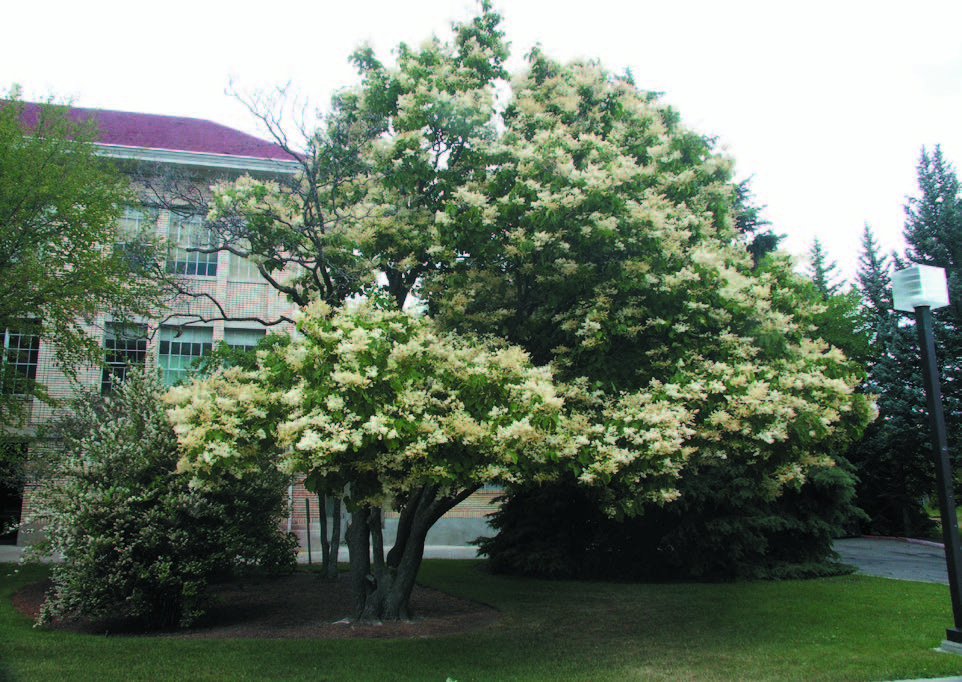 Japanese Tree Lilac
Japanese Tree Lilac
(Syringa reticulata)
Leaves: Opposite; simple; broad ovate to ovate; 2” to 5-1/2” long; deciduous; entire margin; dark green
above; gray-green beneath and glabrous to slightly hairy; petiole 1/2” to 1” long; yellow to brown fall color.
Twigs/Buds: Twigs stout; glossy; glabrous; brown; large lenticels. Often with no terminal bud; lateral buds round with 4 sets of scales, brown.
Flowers/Fruit: Flowers perfect; white; held in 6” to 12” long heads that bloom in June. Fruit a capsule; curved; 3/4” long; warty; brown.
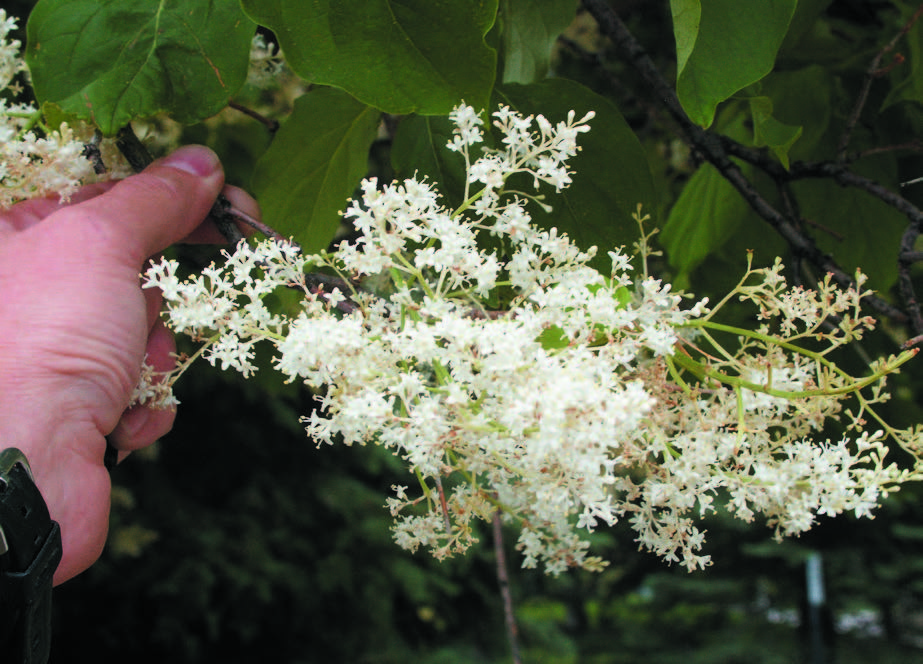 Bark: On young and older branches reddish brown to brown with horizontal ridges or lenticels, cherrylike; gray and scaly on older trunks.
Bark: On young and older branches reddish brown to brown with horizontal ridges or lenticels, cherrylike; gray and scaly on older trunks.
Wood: No information available.
General: Native of Japan. Small to medium-sized tree. Shade intolerant.
Landscape Use: An outstanding small to mediumsized tree known for its beautiful flowers. It has a
broad crown, somewhat shrubby in appearance, but easily pruned to a tree form. It also is fairly tough, relatively insect and disease free, and tolerates high pH soils. This tree should be planted more throughout Utah, except in the hottest locations. Zones 3-7(8?).
Authors
Heidi Kratsch, Assistant Professor and Extension Horticulture Specialist; Michael Kuhns, Professor and Extension Forestry Specialist
Related Research



